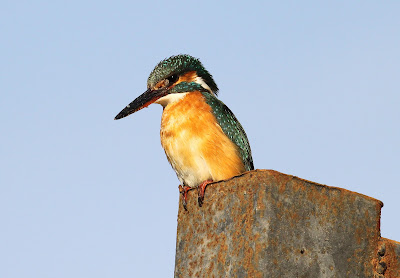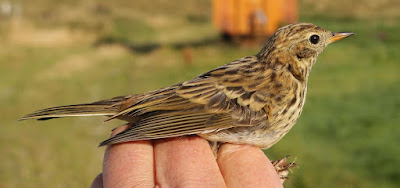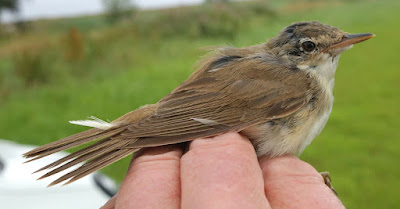Friday produced my first autumnal Kingfisher of 2024, whizzing back and forth across farmland drainage ditches, enough stimulus to inspire another visit on Sunday morning where I hoped for more pictures. At the same place, and if the wind speed stayed low as predicted, maybe catch and ring a few other species.
As an early season breeding species of inland waters the Kingfisher is a surprisingly early returnee to coastal Fylde where the tiny and seemingly fragile fisherman is able to make a winter living wherever there’s a spot to watch, wait and then plunge.
August and September can be an ideal time to look out for their arrival. Warmed by The Irish Sea our coastal waters here remain ice and snow free during most winters when just 15/20 miles away near Preston or Garstang the reverse can be true.
Almost four hours later there was neither sight nor sound of a Kingfisher; such are the vagaries of trying to predict migration or to second guess a species like Kingfisher, its habits or whereabouts.
At first, and for an hour or so, the wind was non-existent. A single net in the open except for the minimal background of vegetated fence posts remained unwavering and strangely still, quite unlike our frequently blown away ringing sessions. It wasn’t to last but in the meantime I caught in double figures, 9 Meadow Pipits and a single Willow Warbler.
Meadow Pipit - first summer
Willow Warbler - first summer
As the wind speed increased so did the birds with a rather sudden but splendid arrival of dozens of Meadow Pipit, Linnet and wagtails, as if they had all waited for a breeze to give them lift off from the runway.
Bright morning sunlight gave photo opportunities whereby the strengthening breeze mattered not.
By now Meadow Pipits poured through with a rough count of 100+, joined in their arrival with mainly Pied Wagtails (30+), Linnets (45+) and even a couple each of Great-spotted Woodpecker and Sedge Warbler.
Click the pics for close-ups.
Great-spotted Woodpecker
Linnet
Meadow Pipit
Sedge Warbler
Back soon folks. Take care out there, it's a funny old world at the moment.
Another Bird Blog.




















































































